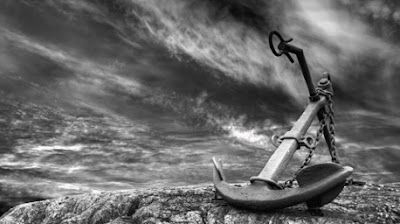Diligent to the Full Assurance of Hope
“But” is in contrast to the preceding warning of vv. 4-8 and marks a sudden shift in tone. We can sense the close relationship and deep concern being expressed by the author(s)1 for this particular reading audience: “we are confident of better things concerning you” (v. 9). These struggling Christians are addressed here as “beloved” (a term of endearment), the only time this expression is used in Hebrews. While apostasy is a lingering threat, it is something this epistle is seeking to avert.
The confidence in the salvation of these readers is based on two things (v. 10): (a) the nature of God: he is not unjust (cf. Gen. 18:25; Zeph. 3:5; Rom. 3:25-26); and (b) the goodness of these brethren: their work of love in ministering to the saints (cf. 1 Thess. 1:3; Acts 11:29; 12:25; Rom. 15:25, 31; Gal. 6:2, 10). Their potential is readily acknowledged.
“And we desire [epithumeō] that each one of you [individually] show the same diligence [spoudē]2 to the full assurance of hope [earnest expectation] until the end,” a call for perseverance, steadfastness, continuity (cf. 3:6, 14; 4:11). Do not become “sluggish” or “lazy” (cf. 5:11), but imitate (cf. 1 Cor. 4:16; 11:1; Phil. 3:17; 1 Thess. 1:7; 2 Thess. 3:9; Tit. 2:7) those who through faith and patience (or “steadfast faith”)3 inherit the promises of the heavenly rest (cf. chaps. 3–4).
The Certainty of God’s Promises
“For when God made a promise to Abraham, because He could swear by no one greater, He swore by Himself, saying, 'Surely blessing I will bless you, and multiplying I will multiply you.' And so, after he had patiently endured, he obtained the promise” (Hebrews 6:13-15).
The example of God’s promise to Abraham provides biblical confirmation, with an allusion and quote from Genesis 22:16-17. Abraham proved his faith by doing what the Lord had commanded him to do. And Abraham “obtained the promise”—though not fully in his lifetime (cf. 11:8-19; John 8:56; Rom. 4:20-21; Gal. 3:14, 16, 29)—only after he had “patiently endured” (NKJV) or “patiently waited” (NASB). The descriptor here is the Greek makrothuméō, meaning to “be long-enduring; to exercise patience, be long-suffering ... forbear” (H. K. Moulton, Analytical Greek Lexicon Revised 256) (6:15).
God Keeps His Promises
“For men indeed swear by the greater, and an oath for confirmation is for them an end of all dispute. Thus God, determining to show more abundantly to the heirs of promise the immutability of His counsel, confirmed it by an oath, that by two immutable things, in which it is impossible for God to lie, we might have strong consolation, who have fled for refuge to lay hold of the hope set before us” (Hebrews 6:16-18).
Human beings pledge by something greater than themselves to confirm an oath (cf. Matt. 5:33-37; 23:16-22), so God, to accommodate human insecurities, has made a promise and guaranteed it by an oath. “For a divine being, swearing would seem to be wholly unnecessary; but since with men oaths are important, God condescended and made Himself, so to speak, His own witness.... God’s promise does not vacillate. It is solid, irrevocable. His mere word is enough; but God, wishing to make men feel doubly sure, stands Himself as the guarantee for His word” (N. Lightfoot, Jesus Christ Today 129, 130). The “heirs of promise” are Abraham’s spiritual descendants (cf. Gal. 3:7, 29).
God cannot lie (6:18; Tit. 1:2; cf. Num. 23:19; 1 Sam. 15:29; Jas. 1:13). The two immutable or unchangeable things are God’s promise and God’s oath. Because of God’s assurance, we have strong consolation/encouragement. We have therefore fled for refuge to lay hold of the hope set before us (cf. Tit. 2:13; Col. 1:5).
“This hope we have as an anchor of the soul, both sure and steadfast, and which enters the Presence behind the veil, where the forerunner has entered for us, even Jesus, having become High Priest forever according to the order of Melchizedek” (Hebrews 6:19-20).
The hope enabled by God is a sure and steadfast anchor of the soul.4 Hope is to the faithful Christian what a secure anchor is to a ship. Hope supports, braces, secures, and gives confidence to the believer during life’s storms. Without hope, we drift aimlessly and have no security in this turbulent world. This hope enables us to enter behind the veil, i.e., in the heavenly Holy of Holies in the presence of God (cf. 9:1-14, 23-28).
It is Jesus, our High Priest, who has gone on before us and makes it possible for us to be in God’s presence (cf. 1 Tim. 1:1; 2:5). Jesus serves in this capacity forever according to the order of Melchizedek (cf. 5:6, 10 [Psa. 110:4]), a key concept explained in the next chapter.
--Kevin L. Moore
Endnotes:
1 See K. L. Moore, “Plural Authorship of Hebrews (Part 2),” Moore Perspective (20 July 2016), <Link>.
2 The only occurrence of this noun in Hebrews (cf. Mark 6:25; Luke 1:39; Rom. 12:8, 11; 2 Cor. 7:11, 12; 8:7, 8, 16; 2 Pet. 1:5; Jude 3); verb spoudázō 4:11.
3 J. Moffatt, NTNT, both concepts joined together as a hendiadys conveying a single thought (N. Lightfoot, Jesus Christ Today 12 n. 22).
4 This passage is the basis of the hymn, “We Have an Anchor” (#614 in Songs of the Church).
Related Posts: Hebrews 5:11–6:8
Image credit: https://www.challies.com/articles/my-anchor-holds/


